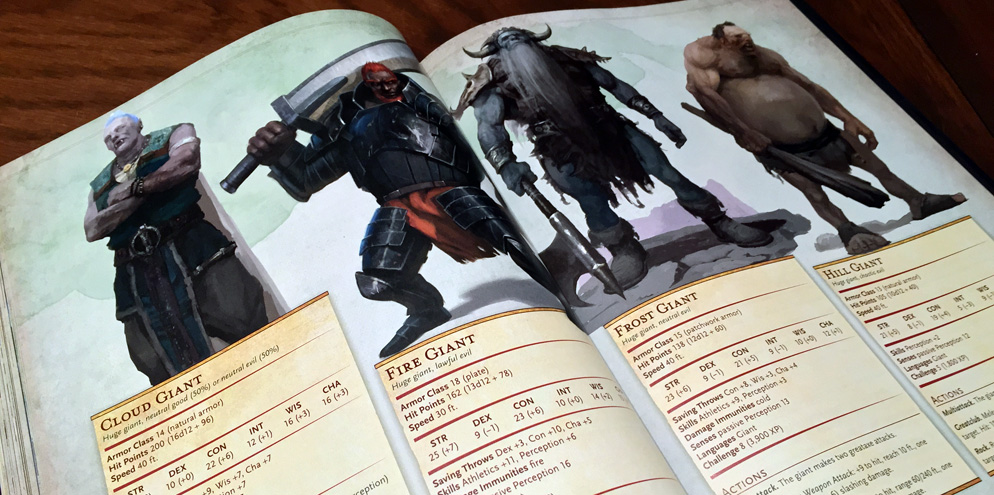As I mentioned in the last blog post, I’ve been trying to bolt some pretty disparate setting material together for a game I plan to start running next year around this time. Making matters more complicated, I don’t even have all of the stuff I plan to use yet, at least not in 5e-compatible form. I’ll refer you back to the previous post for the actual list of materials.
As I also mentioned last week, I’m trying to use as much material as possible from other creators. I have enough irons in the fire that I really don’t want this to turn into another project the size of the other setting I have in the works.
Last time, I mentioned that I’m taking a significant chunk of inspiration from Darkest Dungeon and that solves a lot of my problems. The idea of a somewhat-degenerated but not completely destroyed estate with corrupted environs helps a lot – that accounts for the buried vaults of ancient eldritch evils around the land and the corrupted forest.
This also gives me another setting benefit: the corruption in the forest is originally due to the sheer casualties suffered by the prior civilization that caged the horrors in the first place. That much suffering, terror, madness, and death warped the land, and while the evil in the forest has become its own thing, the fallout of that ancient conflict is the origin point. The evil left from a horrific battle on the site that is now the forest of shadows metastasized over the centuries and is now something entirely apart from the eldritch horrors that participated in its creation.
That leaves another question, though: if the world is home to an ancient, ultra-tech civilization, and if cosmic horrors (some directly from the Cthulhu Mythos) are locked up in vaults there, where’s the rest of the advanced civilizations that implies? For that matter, where the rest of the same civilization that probably made it off-world while the original war was going on?
Allow me to answer in the form of a meme:

This is presented as kind of a humorous (if darkly so) thing, but it works great as a setting design premise!
This is also why I’ve been kind of iffy about using Blades and Blasters as one of my resources; while that stuff may well be out there in the surrounding start systems, the planet the PCs occupy is, to put it mildly, sort of a bad cosmic neighborhood. I am leaving the door open somewhat, though, because it might be interesting, depending on how the campaign goes, to have one of the vaults holding some elder evil send out a distress signal as its safeguards fail.
This premise is even more interesting when you figure that whatever other civilization is out there has had, bare minimum, 10,000 years or so to change network protocols and encoding technologies and just mark the star system the PCs are in as “Hazardous: do not travel” on star maps. If FTL travel relies on wormholes or jump gates, they may have simply disconnected the PCs’ home system from the network. Or there may be some group out there dedicated to watching various “prison worlds” for signs of the elder evils waking up and freeing themselves. Maybe that group is an order of noble start paladins. Maybe that group is a fleet of autonomous killbots that will scour the offending planet of life. Maybe it’s somewhere in between. I honestly haven’t decided what, if anything, might show up later in the game, though I have been thinking about some possibilities.
The other thing that an old ultra-tech society allows for is some neat set pieces which will be just awe-inspiring to fantasy characters.
One particularly neat example is “the endless tower.” The PCs come upon a bunch of overgrown structures clustered around a single tower that seems to have no top, stretching endlessly up into the sky. What they’ve actually found is the base station of a space elevator.
The Counterweight at the top could contain a space station with some neat clues about the world and possibly the means to actually summon some of the potential alien help I’ve been thinking about putting into the setting.
It’s not unthinkable that such a facility would have its own dedicated, self-maintaining, self-replacing robot maintenance and security staff. Self-replicating nanomachines and robo-factories could keep such a facility functional for a very long time indeed as long as they had sufficient energy and materials around.
Layering traditional fantasy over that in any number of ways (perhaps the area that’s now honeycombed with tunnels after being mined out by robots that need materials is infested with giant insects or is home to a bunch of more exotic monsters or even a goblin city or something. If I put the base of the tower in the forest instead of on the other side of some terrain feature that blocks the view of it from the PCs’ home territory (which I will probably do if I include such a location) I can have it overgrown with evil vines and the security bots locked in a perpetual war with some local evil fey or other forest monsters.
A lot of world building possibilities exist at this point, but I’ve got the four pivotal sources of content (Into the Wyrd and Wild, Sandy Petersen’s Cthulhu’s Mythos and Strongholds & Followers) mixed together into an agreeable stew. I have just one more problem left to solve.
Adult Scheduling is Awful
The other major hurdle I wanted to get over is that scheduling for a group of six that includes three parents, a couple of students, and a person who is trying to move and start over a bit after some bad life stuff concluded is that scheduling gets really dicey. And because the group is so close-knit, we generally tend to cancel if we’re missing even one person. Which, sadly, is more frequent than not. So for this game, I am trying something new. I have no idea if it’ll work or not, but I figured it was worth a try.
I’m having the players each make two PCs, one at level 8 and one at level 1 (or maybe 2, I haven’t decided yet).
The level 8 PCs will make up the “main” party. This will include the Viscount (owner of the estate) and their family/entourage. Level 8 is high enough level that our new player can make the druid that turns into flying things that she’s wanted to play since we added her to the gaming group. It’s also high enough level that the party can take on some of the lower-level Cthulhu abominations and not get vaporized in the process. A single CR 12 monster is a “hard” challenge, which is a nice sweet spot for a relatively low-combat campaign that runs on sessions that go from two to two and a half hours on typical weeks. These PCs will be played when we can get the whole group together, and they will handle the big story elements and challenges of the world. Their story will be a relatively dark and serious one with high stakes for the world and awful things to uncover.
The level 1 PCs will be various servants and younger family members (and maybe an awakened pet cat – see the previous post where I mention that Dreamlands Cats are now a playable race) that stay in and around the manor house. They will have the ability to affect the lives of the main party by their actions (and vice versa) but will mostly be reserved for weeks when we only have a partial roster. This group will have lighter stories and smaller stakes, and will take advantage of the fact that people working in a busy manor house will all be indisposed at various times. It also gives room for slightly different types of PCs. For example, child or teenaged PCs, a cat, a living suit of armor that is bound to the house, or the Culinarian sublass of the scholar class who is also the head cook in the manor.
I’ll probably lean on my ability to “wing it” a lot more with the second party because, unfortunately, a lot of the time the stuff that causes cancellations comes up in hours rather than days. Someone gets sick or injured, a family event runs longer than planned, a car breaks down or a mental health episode happens (or, let’s be honest, pick 2-3 items from the list and apply them to different group members) and the session collapses at the last minute.
Both parties will advance simultaneously to prevent “catching up” if we have a bad run of scheduling issues.
I have no idea how well this idea will work. The players have a range of opinions, but are willing to try it. Hopefully a year from now when the game starts, I’ll be able to report either that it works, or that our schedules have been so favorable that we’ve barely been able to try it.
Hey, I can dream, right?
Photo by Chester Alvarez on Unsplash




